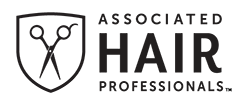Much of what you know about sanitation and disinfection will remain in place, but there are several new considerations, including taking a client’s temperature, and working with a mask and gloves.
Student and Instructor Preparedness
- Hygiene protocols remain standard and customary. The CDC recommends you take steps to ensure everyone adheres to respiratory hygiene, cough etiquette, and hand hygiene. Provide supplies for respiratory hygiene and cough etiquette, including alcohol-based hand rub (ABHR) with 60%–95% alcohol, tissues, and no-touch receptacles for trash disposal.
- Gloves should be worn while performing sanitation and disinfection of all implements and surfaces after each client session, and when handling any paperwork or payment before or after the treatment. Consider disposable gloves to be made available for optional use by the client during treatment.
- Students should wear a mask throughout their entire interaction with the client, from the initial greeting, screening, and interview until the client leaves the school. To further protect staff, students, and clients, consider wearing clothing that can be changed out between clients. If this is not feasible, consider incorporating disposable gowns that can be disposed of and changed between each client. Keep hair up and away from your face. All other practitioner hygienic protocols apply—no long nails, jewelry, open-toe shoes, flip flops, or sandals.
- Avoid shaking hands with clients or hugging.
- Station setup will remain largely unchanged with the exception of social distancing.
- Product should be pre-dispensed onto a product pallet to avoid cross contamination. If product bottles must be handled, allow time to wipe down all product bottles with an EPA-approved disinfectant post-treatment.
- If using a high-efficiency particulate air (HEPA) purifier, make sure it is on before clients begin arriving at the school.
Client Arrival and Intake
- Assume Universal Precautions for all client care: www.cdc.gov/coronavirus/2019-ncov/hcp/infection-control-recommendations.html.
- Use a no-contact thermometer to take client’s temperature upon arrival; ask client to reschedule if their temperature is 100°F or higher. If client is not wearing a mask as requested during the reminder phone call, offer them a disposable mask at this time before continuing.
- Initiate doorway screening checklist questions:
- Have you had a fever in the last 24 hours of 100°F or above?
- Do you now, or have you recently had, any respiratory or flu symptoms, sore throat, cough, or shortness of breath?
- Have you been in contact with anyone in the last 14 days who has been diagnosed with COVID-19 or has coronavirus-type symptoms?
- Ask clients to use hand sanitizer (per CDC, at least 60% alcohol) before going to your station and ensure that it’s applied liberally and properly. Give instruction on how to proceed with the session, including new direction on where to place personal items.
- Provide clients with a hard plastic, non-porous basket where personal items can be placed. Avoid having clients put items in a closet or thrown on a chair, floor, or on the station that will later need to be cleaned.
During the Session
- During the service, check in on the clients who are wearing face coverings to ensure their comfort.
- For those cosmetologists performing services on the face such as lash extensions or brow tinting, consider using a mag light and/or a face shield as an additional barrier to the mask from aspirations between the student and the client. Before and after each client, wipe the mag light and/or face shield down (including the glass, stand, cord, or plastic shield) with an EPA-approved disinfectant.
- Immediately after finishing the service, apply a generous amount of hand sanitizer per CDC application guidelines (at least 60% alcohol).
